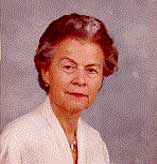|
||||||||||||||||
|

Elisabeth GanttDistinguished University ProfessorMember, National Academy of Sciences, U.S.A.Ph.D., Northwestern University, 1963Telephone: (301) 405-1649 Fax: (301) 314-9489 E-mail: egantt@umd.edu Research Interests: Plant Cell and Molecular Biology, Plant Physiology Carotenoids play essential roles in protecting organisms against potential lethal photo-oxidative damage. In photosynthesis they function in harvesting light for photosynthesis, but also in the dissipation of energy under conditions of excess light. The biosynthetic pathway of carotenoids in oxygen-evolving plants is being studied in photosynthetic microalgae as model systems. Molecular probes for genes encoding several enzymes in the carotenoid biosynthetic pathway are being used in studying the expression of genes (phytoene synthase, phytoene desaturase, and lycopene cyclase) during the induction and accumulation of carotenoid pigments in photosynthetic microalgae that are hyperaccumulators of carotenoids under environmental stress conditions. Success of photosynthetic organisms in natural habitats is dependent upon the organisms' ability to adjust to varying environmental conditions. The uniqueness of the photosynthetic pigment complexes in red algae is being studied prompted by our recent finding of chlorophyll- binding proteins similar to those of green plants. We are studying the structure, function, regulation, and biosynthesis of the complex using immunological, molecular, and biochemical approaches. Recent Publications:Sun, Z., F.X. Cunningham, and E. Gantt. 1998. Differential expression of two isopentenyl pyrophosphate isomerases and enhanced carotenoid accumulation in a unicellular chlorophyte. Proc. Natl. Acad. Sci. (USA) 95: 11482-11488. Durnford, D.G., J.A. Deane, S. Tan, G.I. McFadden, E. Gantt, and B.R. Green. 1999. Phylogenetic assessment of the eukaryotic light-harvesting antenna proteins, with implications for plastid evolution. J. Mol. Evol. 48: 59-68. Grabowski, B., S. Tan, F.X. Cunningham, and E. Gantt. 2000. Characterization of the Porphyridium cruentum Chl a-binding LHC by in vitro reconstitution: LHCaR1 binds 8 Chl a molecules and proportionately more carotenoids than CAB proteins. Photosyn. Res. 63: 85-96. Cunningham, F.X., and E. Gantt. 2000. Identification of multi-gene families encoding isopentenyl diphosphate isomerase in plants by heterologous complementation in Escherichia coli. Plant and Cell Physiol. 41: 119-123. Ershov, Y., R.R. Gantt, F.X. Cunningham, and E. Gantt. 2000. Isopentenyl diphosphate isomerase deficiency in Synechocystis sp. strain PCC6803. FEBS Letters. 473: 337-340. Cunningham, F.X., T. Lafond, and E. Gantt. 2000. A possible role for LYTB in the non- mevalonate pathway of isoprenoid biosynthesis. J. Bacteriol. 182: 5841-5848. Grabowski, B., F.X. Cunningham, Jr., and E. Gantt. 2001. Chlorophyll and carotenoid binding in a simple red algal LHC crosses phylogenetic lines. Proc. Natl. Acad. Sci. (USA) 98: 2911-2916. Cunningham, F.X., Jr. and E. Gantt. 2001. One ring or two? Determination of ring number in carotenoids by lycopene -cyclase. Proc. Natl. Acad. Sci. (USA) 98: 2908-2910. | ||||
|
|
|||||
|
